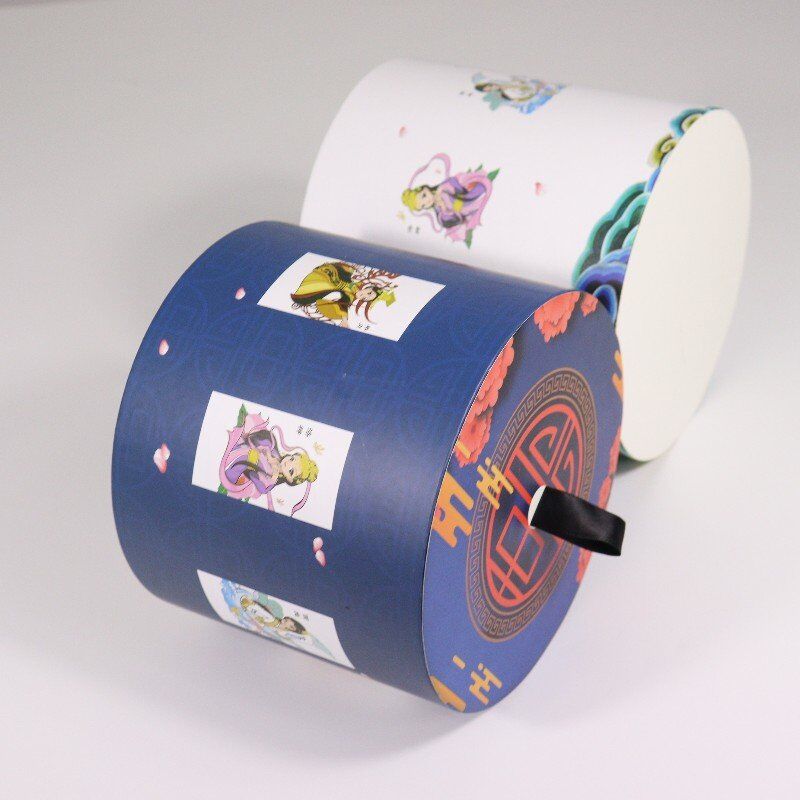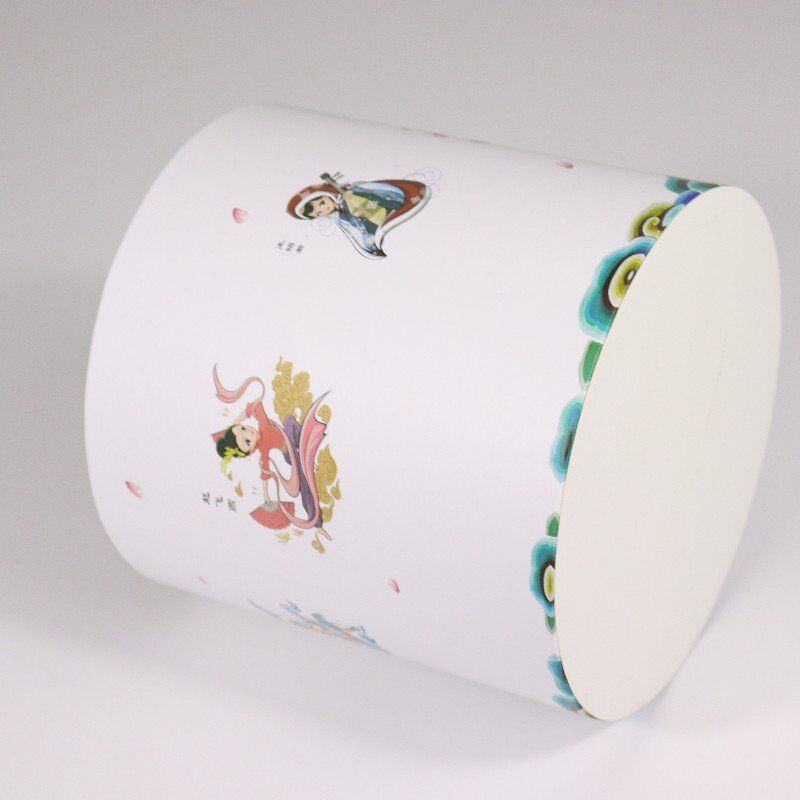- All
- Product Name
- Product Keyword
- Product Model
- Product Summary
- Product Description
- Multi Field Search

Content Menu
● Choosing the Right Flower Box
● Choosing Plants for Your Flower Box
● Incorporating Medicine Paper Box Factory Elements
>> Watering
>> Fertilizing
>> Pest Control
>> Spring
>> Summer
>> Fall
>> Winter
● Troubleshooting Common Issues
>> Leggy Growth
Flower boxes are a beautiful way to add color and life to your home's exterior or garden. Whether you're a seasoned gardener or a beginner, filling a flower box can be a rewarding and enjoyable experience. This comprehensive guide will walk you through the process of filling a flower box, from choosing the right plants to maintaining your beautiful display. We'll also explore some creative ways to incorporate elements from a medicine paper box factory for a unique touch.
Before you start filling your flower box, it's essential to select the right container. Consider the following factors:
- Size: Ensure the box is large enough to accommodate your chosen plants and allow for root growth.
- Material: Choose a durable material that complements your home's exterior.
- Drainage: Make sure the box has adequate drainage holes to prevent waterlogging.
When selecting a flower box, consider repurposing materials from a medicine paper box factory. These boxes can be reinforced and waterproofed to create unique, eco-friendly planters.
Flower box types


Once you've selected your flower box, follow these steps to prepare it for planting:
1. Clean the box thoroughly if it's not new.
2. Add a layer of gravel or small stones at the bottom for improved drainage.
3. Line the box with landscape fabric to prevent soil from escaping through drainage holes.
If using a repurposed medicine paper box, apply a waterproof sealant to the interior to protect it from moisture.
Selecting the right plants is crucial for a successful flower box. Consider the following factors:
- Sunlight exposure
- Climate and hardiness zone
- Color scheme and aesthetic preferences
- Plant height and growth habits
Some popular choices for flower boxes include:
- Petunias
- Geraniums
- Impatiens
- Begonias
- Lobelia
- Marigolds
When selecting plants, consider their compatibility with materials from a medicine paper box factory. Some plants may interact better with recycled paper products, contributing to a more sustainable gardening approach.
Popular flower box plants
Now that you've prepared your box and chosen your plants, it's time to start filling your flower box. Follow these steps:
Use a high-quality potting mix specifically designed for container gardening. Fill the box about 2/3 full with soil. If you're using a repurposed medicine paper box, consider mixing in some shredded paper from the factory to improve soil structure and water retention.
Before planting, arrange your plants in the box to determine the best layout. Consider the "thriller, filler, spiller" technique:
- Thriller: Tall, eye-catching plants for the center or back of the box
- Filler: Medium-sized plants to fill in spaces
- Spiller: Trailing plants to cascade over the edges
Thriller, filler, spiller arrangement
Once you're satisfied with the arrangement, remove the plants from their containers and gently loosen the roots. Plant them in the soil, ensuring they're at the same depth as they were in their original pots.

Fill in any gaps between plants with additional potting soil, gently pressing it down to eliminate air pockets.
Water your newly planted flower box thoroughly, allowing excess water to drain out.
For a unique and eco-friendly touch, consider incorporating elements from a medicine paper box factory into your flower box design. Here are some creative ideas:
1. Use recycled medicine paper boxes as biodegradable seed starters.
2. Create decorative dividers within your flower box using medicine paper box materials.
3. Craft small plant markers from medicine paper box scraps.
4. Use medicine paper boxes to create a mosaic design on the exterior of your flower box.
5. Shred paper waste from the factory to use as mulch or soil amendment.
Medicine paper box crafts
By repurposing materials from a medicine paper box factory, you're not only adding a distinctive element to your flower box but also promoting sustainability in gardening.
To keep your flower box looking beautiful throughout the season, follow these maintenance tips:
Water your flower box regularly, ensuring the soil remains consistently moist but not waterlogged. The frequency will depend on factors such as climate, plant types, and box location. If using a medicine paper box-based planter, be extra vigilant about moisture levels to prevent degradation of the box.
Feed your plants with a balanced, water-soluble fertilizer every 2-4 weeks during the growing season. Consider using organic fertilizers that complement the eco-friendly nature of your repurposed medicine paper box planter.
Remove spent blooms and prune plants as needed to encourage continued flowering and maintain a tidy appearance. Compost the trimmings or use them as natural mulch in your flower box.
Monitor your plants for signs of pests or diseases, and take appropriate action if necessary. Opt for natural pest control methods to maintain the eco-friendly integrity of your medicine paper box-inspired flower box.
Flower box maintenance
Adapt your flower box plantings to the changing seasons:
Plant early-blooming annuals and bulbs for a burst of color after winter. Consider using biodegradable seed starters made from medicine paper boxes to get a head start on your spring planting.
Choose heat-tolerant plants that can withstand hot temperatures and intense sunlight. Use shredded paper from the medicine box factory as a mulch to help retain moisture during hot summer days.
Incorporate autumn-hued flowers and foliage plants for a seasonal display. Use fallen leaves and shredded paper to create a protective layer for plants as temperatures drop.
In milder climates, plant evergreens and cold-hardy annuals. In colder regions, consider decorating your flower box with non-living materials for winter interest. Repurposed medicine paper boxes can be used to create winter-themed decorations for your flower box.

To make your flower box stand out, consider these creative ideas:
1. Monochromatic color scheme
2. Edible flower and herb combination
3. Succulent garden
4. Butterfly and bee-friendly plantings
5. Vertical flower box wall using stacked medicine paper boxes
Creative flower box ideas
Even with proper care, you may encounter some challenges with your flower box. Here are solutions to common problems:
- Cause: Underwatering or overwatering
- Solution: Adjust watering frequency and ensure proper drainage. If using a medicine paper box-based planter, check for any degradation that might affect water retention.
- Cause: Nutrient deficiency or overwatering
- Solution: Fertilize regularly and improve drainage. Consider adding shredded paper from the medicine box factory to improve soil structure.
- Cause: Insufficient light
- Solution: Move the flower box to a sunnier location or choose shade-tolerant plants. If using a repurposed medicine paper box, ensure it's not blocking light from reaching the plants.
- Cause: Various insects or diseases
- Solution: Identify the pest and use appropriate treatment methods. Opt for natural remedies that won't harm the eco-friendly nature of your medicine paper box-inspired planter.
Flower box troubleshooting
Filling a flower box is a rewarding way to enhance your outdoor space and express your creativity. By following the steps outlined in this guide and incorporating unique elements like those from a medicine paper box factory, you can create a stunning and sustainable floral display that will bring joy throughout the seasons.
Remember to choose the right plants for your conditions, maintain your flower box regularly, and don't be afraid to experiment with different combinations and designs. With a little care and attention, your flower box will flourish and become a beautiful focal point of your home or garden.
By integrating materials from a medicine paper box factory, you're not only creating a unique aesthetic but also contributing to a more sustainable approach to gardening. This innovative use of recycled materials showcases how creativity and eco-consciousness can come together to produce beautiful results in your home garden.
1. Q: How often should I water my flower box?
A: The frequency of watering depends on factors such as climate, plant types, and box location. Generally, water when the top inch of soil feels dry to the touch. This could be daily in hot, dry conditions or every few days in cooler weather.
2. Q: Can I use garden soil in my flower box?
A: It's best to use a high-quality potting mix specifically designed for container gardening. Garden soil can become compacted in containers, leading to poor drainage and root health issues.
3. Q: How can I prevent my flower box from drying out quickly?
A: To help retain moisture, you can add water-retaining crystals to your potting mix or apply a layer of mulch on top of the soil. You can also consider using self-watering flower boxes or installing a drip irrigation system.
4. Q: What are some good trailing plants for flower boxes?
A: Popular trailing plants for flower boxes include ivy geraniums, bacopa, lobelia, sweet alyssum, and trailing petunias. These plants will cascade over the edges of your box, creating a lush, full appearance.
5. Q: How can I incorporate elements from a medicine paper box factory in my flower box design?
A: You can use recycled medicine paper boxes to create biodegradable seed starters, craft decorative dividers within your flower box, make plant markers, or create a unique mosaic design on the exterior of your flower box. This not only adds a distinctive touch but also promotes sustainability in gardening.